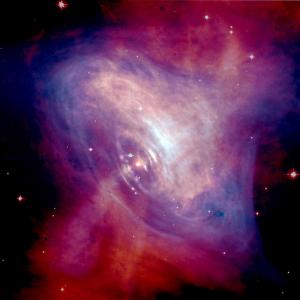Most massive stellar black hole in our galaxy found
20 Apr 2024 14:36:26 UTC
Topic 231021
(moderation:
Hallo!
A Black Hole of unusual high 33Msun has been found in 2000Ly distance only, within unpublished data from the astrometry satellite GAIA. The revolving star is of very low metallicity. That does mean, they are very old, 2nd generation star.
The according scientific paper you find here.
I´m somewhat astonished, the mass of the accompanying star has not been determined, but the revolving time of 11.6 years. Or didn't I find it?
Kind regards and happy crunching
Martin
Language
Copyright © 2024 Einstein@Home. All rights reserved.


Hi Martin! On page 6 the
)
Hi Martin!
On page 6 the Table 3 at the top (and comments beginning under the 'Discussion' heading on page 7) puts the visible companion (ie. not the black hole) at 0.76 +/- 0.05 solar masses. It seems (section 2.4, a complex explanation) that it was other data sets used to get this value.
The paper talks of the 'mass function', where the actual value of fM is derived from their observations, is in this case given by the formula :
fM = M2 ((M2/(M1 + M2))2 [units of solar masses]
So if you know the visible M1 then you can deduce/calculate the invisible M2. So that's the black hole's companion and hence the black hole is 32.70 ± 0.82 solar masses. Interestingly they discuss other scenarios consistent with hidden alternate arrangements : a pair of black holes with a visible orbiting companion etc ... and they settle on the simplest explanation (ie. Occam's Razor).
Cheers, Mike.
I have made this letter longer than usual because I lack the time to make it shorter ...
... and my other CPU is a Ryzen 5950X :-) Blaise Pascal